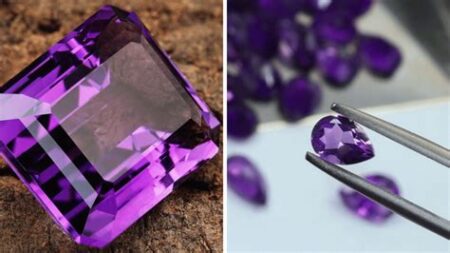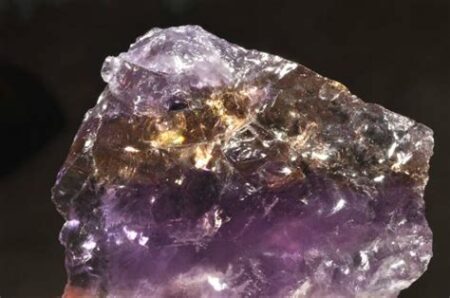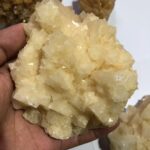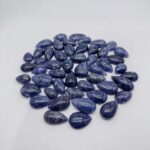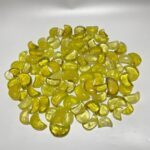Calcite quartz, a mesmerizing mineral known for its multifaceted nature, has captivated scientists, architects, and jewelry enthusiasts alike. Its unique characteristics and wide-ranging applications make it a material of profound value.
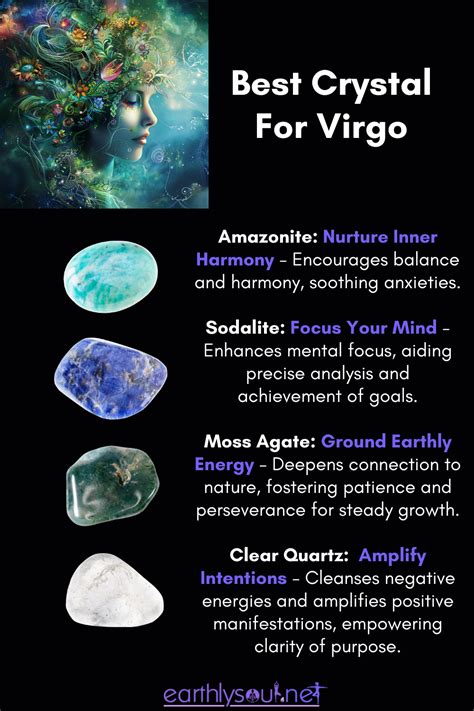
Composition and Crystal Structure of Calcite Quartz
Calcite quartz, also known as calcite, is predominantly composed of calcium carbonate (CaCO3). It belongs to the trigonal crystal system, resulting in its characteristic rhombohedral or scalenohedral crystal shapes.
Optical Properties of Calcite Quartz
One of the most striking properties of calcite quartz is its high degree of birefringence. When light passes through calcite, it splits into two beams with different polarization directions, resulting in the phenomenon known as double refraction. This unique optical property makes calcite an essential component in polarizing filters used in photography, optics, and microscopy.
Physical Properties of Calcite Quartz
Calcite quartz exhibits a hardness of 3 on the Mohs scale, making it a relatively soft mineral. However, its crystalline structure provides it with exceptional strength and durability. Its specific gravity ranges from 2.71 to 2.72, making it slightly heavier than water.
Chemical Properties of Calcite Quartz
Calcite quartz is a chemically active mineral, readily reacting with acids such as hydrochloric acid (HCl) and nitric acid (HNO3). This reactivity is attributed to the presence of carbonate ions (CO3²-) in its crystal structure.
Applications of Calcite Quartz
Industrial Applications
Calcite quartz finds extensive use in industrial processes:
- Construction: Calcite is utilized as a raw material in the production of cement, lime, and building blocks due to its high calcium content.
- Agriculture: Calcite is added to soil as an agricultural amendment to neutralize acidity and provide essential calcium for plant growth.
- Paper Industry: Calcite is employed as a filler in the paper production process to enhance brightness, smoothness, and opacity.
Scientific Applications
Calcite quartz plays a crucial role in scientific research and exploration:
- Crystallography: Calcite has been extensively studied as a model mineral for understanding crystal growth and deformation mechanisms.
- Geochemistry: Calcite formation and deposition can provide insights into geological processes and paleoenvironmental conditions.
- Optics: Calcite’s birefringent properties are exploited in the fabrication of polarizing filters and optical instruments.
Jewelry and Gemstones
Calcite quartz is highly valued in the world of jewelry and gemstones:
- Ornamental Stones: Calcite’s unique crystal shapes and transparency make it a popular material for jewelry and decorative objects.
- Iceland Spar: A transparent variety of calcite, known as Iceland spar, is prized for its exceptional optical qualities and is often used in polarization experiments.
- Gemstones: Certain varieties of calcite, such as blue calcite and golden calcite, are highly sought after as gemstones.
Other Applications
Calcite quartz continues to inspire innovative applications in various fields:
- Pharmaceuticals: Calcite is utilized as a source of calcium carbonate in pharmaceutical formulations.
- Drilling: Calcite is used as a drilling fluid additive to regulate viscosity and prevent wellbore collapse.
- Flotation: Calcite’s chemical properties make it useful as a flotation agent in mineral processing to separate minerals based on their surface properties.
Benefits and Drawbacks of Calcite Quartz
Calcite quartz offers numerous benefits:
- Versatility: Its wide-ranging properties make it applicable in diverse industries and disciplines.
- Optical Properties: Calcite’s birefringence enables the development of advanced optics and imaging technologies.
- Durability: Its crystalline structure provides significant strength and durability, ensuring long-term performance.
However, there are also potential drawbacks to consider:
- Hardness: Calcite’s relatively low hardness makes it susceptible to scratches and abrasions.
- Chemical Reactivity: Its reactivity with acids can limit its use in corrosive environments.
- Environmental Concerns: Calcite mining and processing can pose environmental concerns related to land degradation and waste generation.
Future Applications of Calcite Quartz
The innovative potential of calcite quartz continues to be explored, leading to the emergence of promising new applications:
- Nanotechnology: Calcite nanoparticles hold potential for applications in drug delivery, optical coatings, and energy storage.
- Photocatalysis: Calcite-based materials are being investigated for their ability to catalyze chemical reactions using light energy.
- Biomimetics: The unique crystal structure of calcite inspires the development of novel biomaterials for bone regeneration and tissue engineering.
Conclusion
Calcite quartz, an extraordinary mineral with diverse properties and applications, continues to inspire scientists, engineers, and artists alike. Its optical clarity, chemical reactivity, and crystallographic significance make it a material of immense value. Whether employed in industrial processes, scientific research, or decorative arts, calcite quartz remains an indispensable resource for human ingenuity. As we delve deeper into its potential, we can anticipate even more transformative applications in the years to come.
FAQs
-
What is the Mohs hardness of calcite quartz?
– Calcite quartz has a Mohs hardness of 3. -
What is the specific gravity of calcite quartz?
– The specific gravity of calcite quartz ranges from 2.71 to 2.72. -
Is calcite quartz water soluble?
– No, calcite quartz is not water soluble. -
What is the primary use of calcite quartz?
– The primary use of calcite quartz is in the construction industry as a raw material for cement, lime, and building blocks. -
How is calcite quartz used in scientific applications?
– Calcite quartz is used in scientific applications such as crystallography, geochemistry, and optics due to its unique optical and crystalline properties. -
Is calcite quartz a valuable gemstone?
– Yes, certain varieties of calcite quartz, such as blue calcite and golden calcite, are considered valuable gemstones. -
What are the potential drawbacks of using calcite quartz?
– The potential drawbacks of using calcite quartz include its low hardness, chemical reactivity, and environmental concerns associated with mining and processing. -
What are some future applications of calcite quartz?
– Future applications of calcite quartz include nanotechnology, photocatalysis, and biomimetics.

